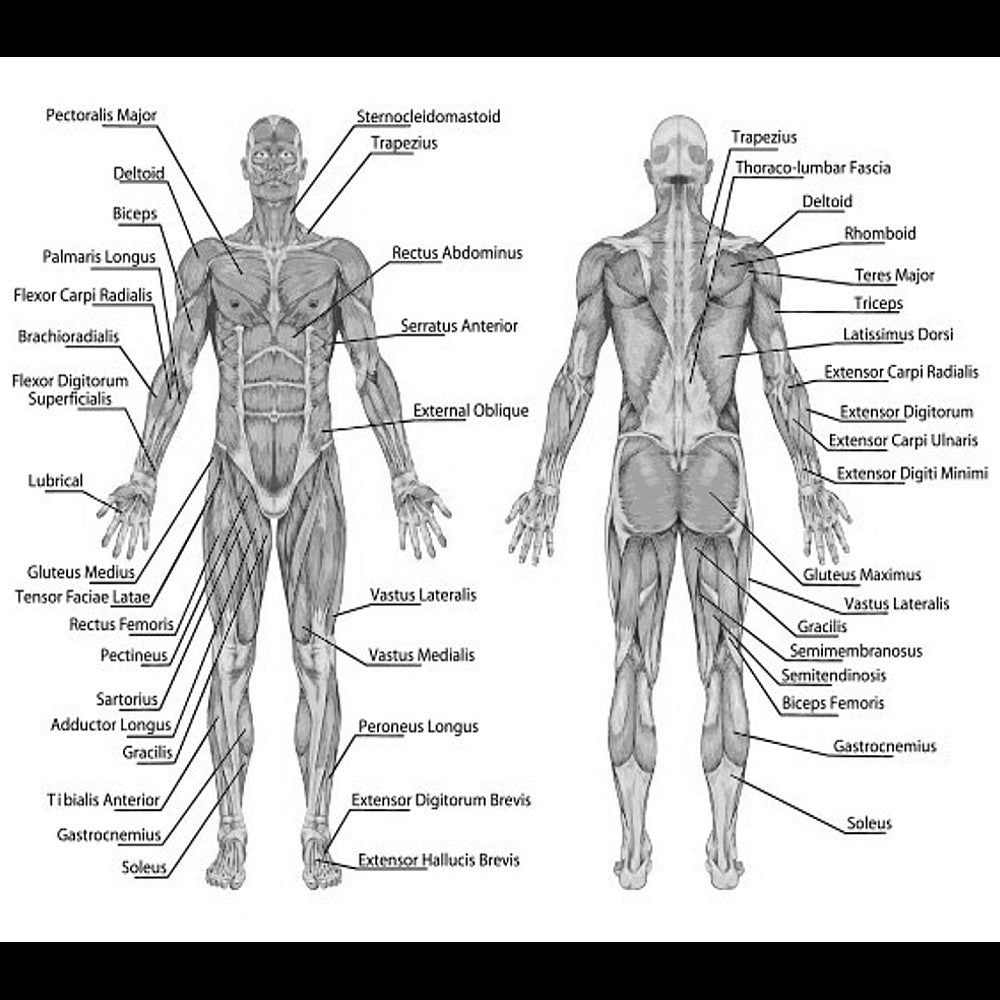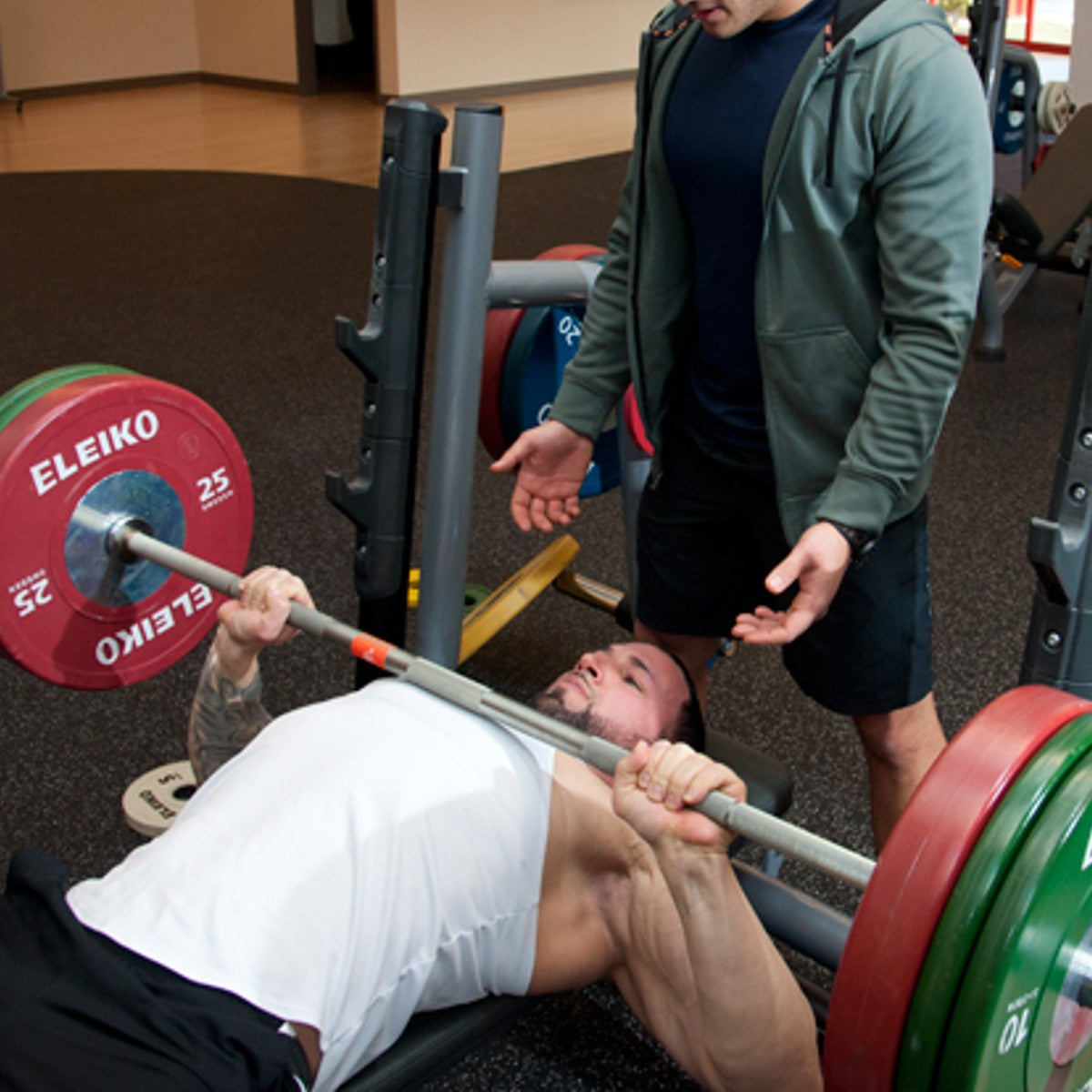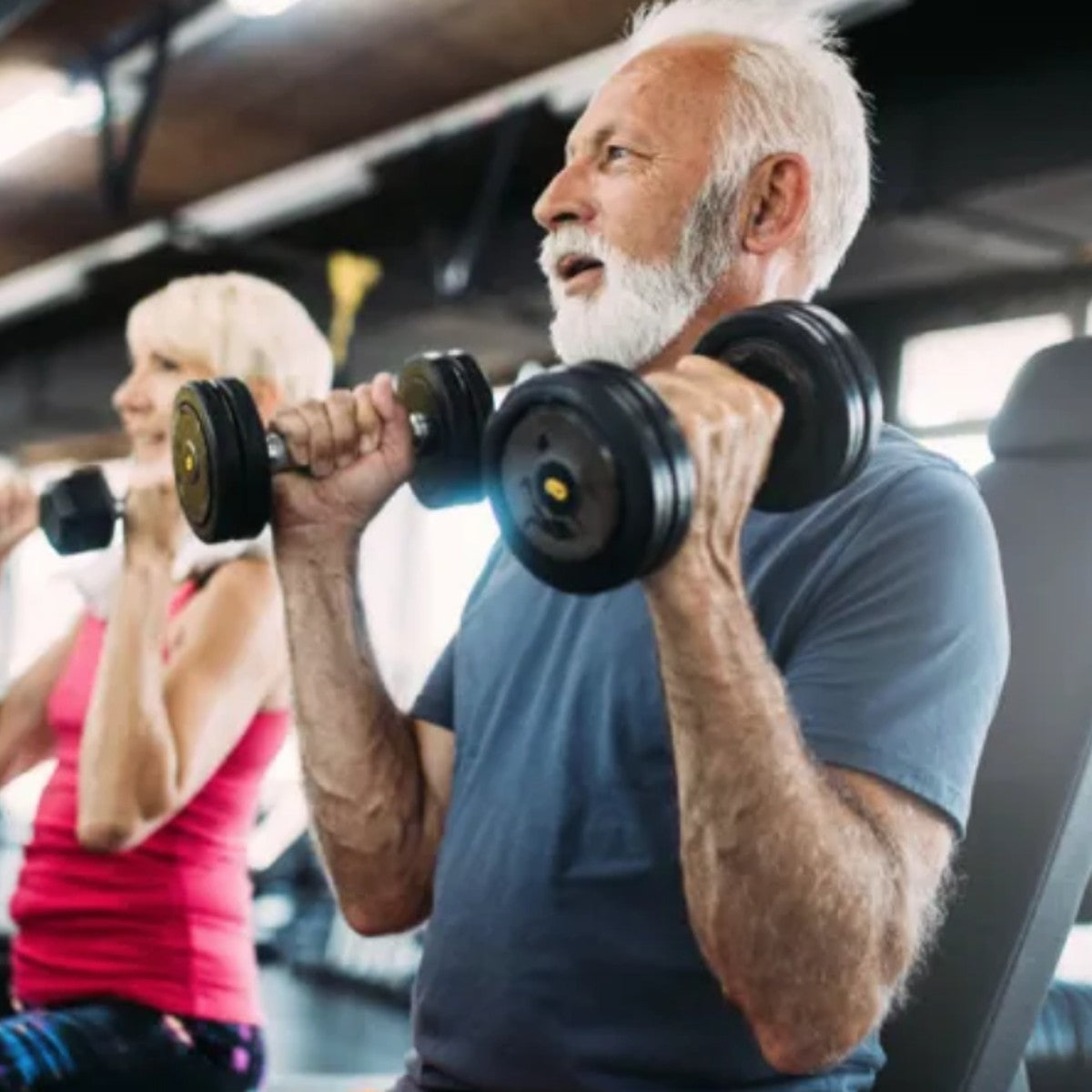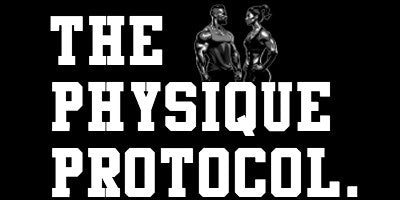Your Cart is Empty
Muscle Building Expertise For Men & Women

You lose 3-5% of muscle mass per decade after the age of 30...
Men & Women can slow this natural decline and even reverse it through lifting weights - often enough, long enough, and heavy enough.
A credentialed trainer like myself with real experience can design a personalised program, teaching you proper form and technique. Online coaching is also available if you're not ready for in-person sessions or live internationally.
Why Is Building Muscle So Difficult?

Building muscle is straightforward in principle, but challenging in practice...
Most make mistakes in 3 key areas:
Training - Most don't train hard, smart, or consistently enough to build muscle. Without managing training volume, frequency, and intensity intelligently, you will not push your body enough to stimulate muscle growth.
Nutrition - People do not support their training with the correct macronutrient timing or ratios and food quality.
Lifestyle - Neglecting recovery protocols, sleep quality, and effective stress management, will compromise your performance and inhibit your muscle growth potential.
Muscle Building Myths

Muscle building is a process, there is no magic to it...
Anyone has the ability to develop a muscular or toned body, but many people fall prey to the muscle-building myths and misconceptions.
- I can't build muscle because of my genetics
- I need expensive supplements to grow muscle.
- I have to 'bulk' to gain size first.
I cut through that noise with a science-backed, data-led approach proven to help you build significant muscle in remarkably short time frames.
Muscle Building Expertise For Men & Women
What Are The Benefits of Building Muscle?
-
One of the most notable risks associated with ageing is sarcopenia, or age-related muscle loss.
Evidence indicates that sarcopenia predicts a 60% to 110% increase in the risk of all-cause mortality, even when accounting for comorbidities like obesity and diabetes.
And while this may not be a concern for everyone right now, the research shows that for every decade after 50 your risk of sarcopenia increases by 10%.
It’s not just a case of being weaker either – sarcopenia-related obesity is associated with insulin resistance, type 2 diabetes, atherosclerosis and cardiovascular disease. However, sarcopenia can be mitigated by following a high-protein diet and resistance training, which signals to the body to retain lean body mass.
-
Progressive resistance training will help improve your strength and increase your muscle mass, when done correctly.
Increased strength and lean muscle mass improve a range of health outcomes that go way beyond simply looking good.
These include a reduced risk of osteoporosis in women, improved insulin sensitivity, improved hormonal function, and reduced risk of cardiovascular disease.
-
Resistance training with weights has been shown in numerous studies to not only build muscle but also help protect bones and prevent osteoporosis-related fractures.
Pre- and post-menopausal women are particularly susceptible to decreased bone density and increased risk of fracture as the production of female sex hormone oestrogen drops. Weaker bones combined with less muscle mass can increase the risk of trips, falls and, ultimately, hospitalisations.
But training with weights has not only been shown to increase bone density, but it also helps slow down sarcopenia, preserving muscle mass, increasing strength and maintaining joint integrity which reduces the likelihood of trips and falls as we age..
-
A stroke – where the blood supply to your brain is cut off – is one of the world’s biggest killers and causes of long-term disability. Your risk of suffering a stroke increases by 22% if you are overweight. This risk triples if you are obese.
-
Regular exercise and improved body composition are associated with improved mood, mental health, cognitive function and reduced risk of chronic disease.
The benefits of exercise as we age don’t stop at the physical – there are also numerous cognitive benefits too. Alzheimer’s disease and dementia are two neurodegenerative diseases strongly associated with age. Significant structural and functional changes occur in the ageing brain that can lead to mental and physical disability. Symptoms of this cognitive decline include regularly feeling confused, forgetful, having difficulty concentrating, and struggling with daily activities.
Among risk factors for both, physical inactivity ranks high. Evidence has shown that those who perform regular physical activity are less likely to be diagnosed with dementia and Alzheimer’s.
-
One of the key ways we can improve insulin sensitivity is by resistance training. It improves the body’s ability to store and uptake glycogen from muscle cells.
A recent study investigated the effects of resistance training for six weeks. The participants completed one set of each exercise to failure and the researchers also compared this to adaptations in muscle size and strength. Resistance training resulted in a 16% increase in insulin sensitivity.
With fat loss also comes improved nutrient partitioning, which means that the body is able to utilise fuel more efficiently rather than storing it as fat. It also reduces systemic inflammation, which can disrupt numerous physiological processes.
-
Losing weight helps reduce systemic inflammation, which interferes with multiple physiological processes, including immune system response, mental and physical health.
Losing weight and getting to a healthy body fat percentage improves nearly all health markers, including blood sugar, blood pressure, blood lipid profile and resting heart rate.

How To Build Muscle Naturally?

Progressive overload, calories and a sufficient protein intake are essential factors...
Expect 1-2 pounds per month of muscle gain under optimal conditions - sleep, nutrition and training in check.
Make no mistake about it, this stuff isn't easy. Otherwise you wouldn't be reading about it on the internet.
If you're somebody who's worried about wasting time, or you want to have an expert create a workout and nutrition program that's based on your current situation, consider checking out our one-to-one personal trainingor online fitness coaching services
What Does Science Say About Building Muscle Mass?

Building muscle means more than just looking good..
Science shows us that building muscle not only helps transform your body shape but helps improve many health markers as we age such as:
- Improved insulin sensitivity, reducing the risk of type 2 diabetes.
- Improve bone and joint health, helping to prevent osteoporosis.
- Improved cardiovascular health helping to reduce blood pressure and cholesterol levels.
Muscle and Strength FAQ's
-
For the majority of people, we look to put them through a program of fat loss first. This is for three reasons:
1. You will look more muscular if you are leaner and therefore have more muscle definition.
2. Once you are lean, we can then increase calories for a focused muscle-building phase. This way we can minimise body fat increases while gaining lean muscle.
3. From a position of improved body composition, your body will be able to better partition nutrients, meaning that it will make the most use of the calories you eat.
-
What sets 'The Physique Protocol' apart from any other personal training business In Ireland or abroad is that everything we do, both inside and outside of the gym, is laser-focused on giving you tangible results and measurable outcomes.
We don’t just put you through mindless exercise just to make you feel tired and sweaty. Every single movement and exercise in your workout has a specific purpose to help you achieve your specific goal – whether that is losing fat, improving your blood pressure or enhancing your general health.
Our training methodology is focused, controlled and executed to the highest possible standard.
It’s not uncommon for many clients to discover a new-found love for fitness when they see and feel the myriad benefits that weight training and optimal nutrition can elicit.
-
It depends! For the majority of the population and particularly those here in Ireland that experience cloudy skies and rain most of the year, I would recommend some essentials, for example Magnesium, Vitamin D3, multi-vitiman and some form of essential fatty acids . These ensure that your body is functioning optimally and can recover effectively from the stimulus we apply in the gym.
I also recommend performance supplements, such as caffeine, to make sure you can get the most out of every single minute in your training session.
However, supplementation does not supersede effective training, nutrition and recovery.
-
Yes, it’s more than possible to lose fat and gain muscle at the same time, achieving what is often referred to as ‘body recomposition’.
This change is due to the combination of a calorie deficit to reduce fat stores alongside a training plan that signals to the body to retain muscle.
Because most clients are new to resistance training or have not trained to the same intensity as our programs, many increase their level of muscle mass alongside losing fat.
-
Growth will happen if you put your body in the right conditions to do so. Most people make the mistake of hopping between programs, failing to record their workouts or progress and underestimate the importance of proper recovery and stress management.
People also get caught up in the latest fancy fad exercises on Instagram. But what we should focus on is doing the basics and doing them well. Most of the time, it is a rotation of key movement patterns that can come in a variety of forms and variations. We can tweak these to create an unlimited range of exercises to keep things interesting while still nailing the basics.
We go for effective, not fancy. The art is in the coaching of each exercise and unlocking your true physical potential.
-
This depends on your goal, preferences and lifestyle. In most cases, we encourage clients to obtain most of their food intake from high-quality, single-ingredient sources, such as lean meats and sources of protein, lots of green fibrous vegetables and healthy fats, like nuts, avocado or olive oil.
This is because such foods not only improve multiple health markers, such as blood pressure, cholesterol, and insulin sensitivity, they also enhance satiety, energy levels, hormonal health and nearly every other physiological process.
However, we also appreciate that our clients are not robots and that they have lives. This is why our trainers work with each client as an individual with unique commitments. While some sacrifice may be necessary to achieve your goal, your trainer will work with you to find solutions and strategies that work for you.
-
We don’t necessarily prioritise weight training over cardio, but they do play different roles within a transformation.
In order to improve body composition, we nearly always need some level of fat loss and to do that we need to create a calorie deficit. It is very hard to do this through diet alone without being very restrictive, which can only be effective for so long. It’s also very hard to do this through exercise alone and one high-calorie meal can easily offset several hours’ work. That’s why we use a combination of reduced calorie intake and increased general activity levels to increase our deficit.
It’s important to remember that cardio is simply one option in the fat loss toolbox. There’s nothing magic about cardio; it simply increases the number of calories you burn in general (as well as making you better at that form of exercise).
However, it can also place competing demands on the body when it comes to adaptation and recovery from resistance training, which is why we tend to recommend low-impact forms of activity, such as walking, for the most part, and minimal or even no cardio in many cases.
Once we have created the demand for our body to tap into its stored energy, we need to make sure this comes from tissue we don’t want to keep (body fat) rather than tissue we do (muscle). Rather than simply to burn huge numbers of calories, resistance training functions to retain and build lean tissue during times of caloric restriction. This has numerous important implications for physical appearance as well as wellbeing:
- Improved aesthetic – think looking good naked as well as in clothes.
- Improved nutrient partitioning – you make the most out of the foods you eat and reduce the risk of conditions such as type II diabetes.
- Improved strength and reduced risk of age-related sarcopenia and osteoporosis. Reduced risk of all-cause mortality.
- And the most important one… being able to eat more!
In summary, we create a calorie deficit through increased activity and nutrition changes. The level of this deficit determines whether we lose weight and how fast. We can then encourage the body to tap into body fat by resistance training, eating adequate protein and optimising recovery.
-
No, you do not need to put on excessive amounts of body fat to increase your muscle mass. In fact, a common mistake is that people mistakenly believe they need to eat an enormous surplus of calories to gain muscle tissue.
However, this is likely to result in you gaining just as much muscle mass as if you were in a moderate surplus or maintenance, but with a lot more fat! When you then diet down to reveal the additional muscle, you’re likely to lose the marginal gains as a by-product of fat loss. Increasing body fat also makes you liable to be less metabolically healthy, which has zero advantages, whether from a health, training performance or nutritional perspective.
-
You don’t need to squat, bench and deadlift to gain muscle. These are simply movement patterns, of which there is a multitude of different variations to suit each and every individual. There are no golden rules when it comes to exercise selection for muscle gain. What works is the exercise that allows you to be most stable and generate the most amount of force, safely and under control. The only variable we then need to control for is progressive overload over time, making sure the session volume (sets x reps x load) increases over time.
When you begin your training, you will go through a detailed movement assessment designed to test not only your current capabilities but your mobility and working ranges. We then select the exercises based on this information, rather than shoe-horning you into an exercise you can’t complete.
Muscle Building Can Feel Like a Complicated & Mystifying Process For Many. Here's Some Common Questions You Might Have.
GET STARTED WITH AN ONLINE PERSONAL TRAINER TODAY!
Whether you're interested in online coaching or one-to-one personal training in Dublin, I'll show you how I can help you achieve maximum results in minimum time. Fill out the form below to get started or find out more information.
To get In touch, please complete the short application form. When your ready, click send.
Once your application Is reviewed and successful, you will be Invited to book a FREE 15 minute strategy call at a date & time that suits you.
Your strategy call will be with me personally - Head Physique Coach and Founder of The Physique Protocol - Kevin Fitzpatrick.
On the call, we will discuss your biggest fitness challenges, training history, lifestyle, diet, and so much more so that I can get a deeper understanding of the right protocol for you.
With all this Information we’ll then formulate a roadmap to make sure you move towards achieving the results you have always wanted!


